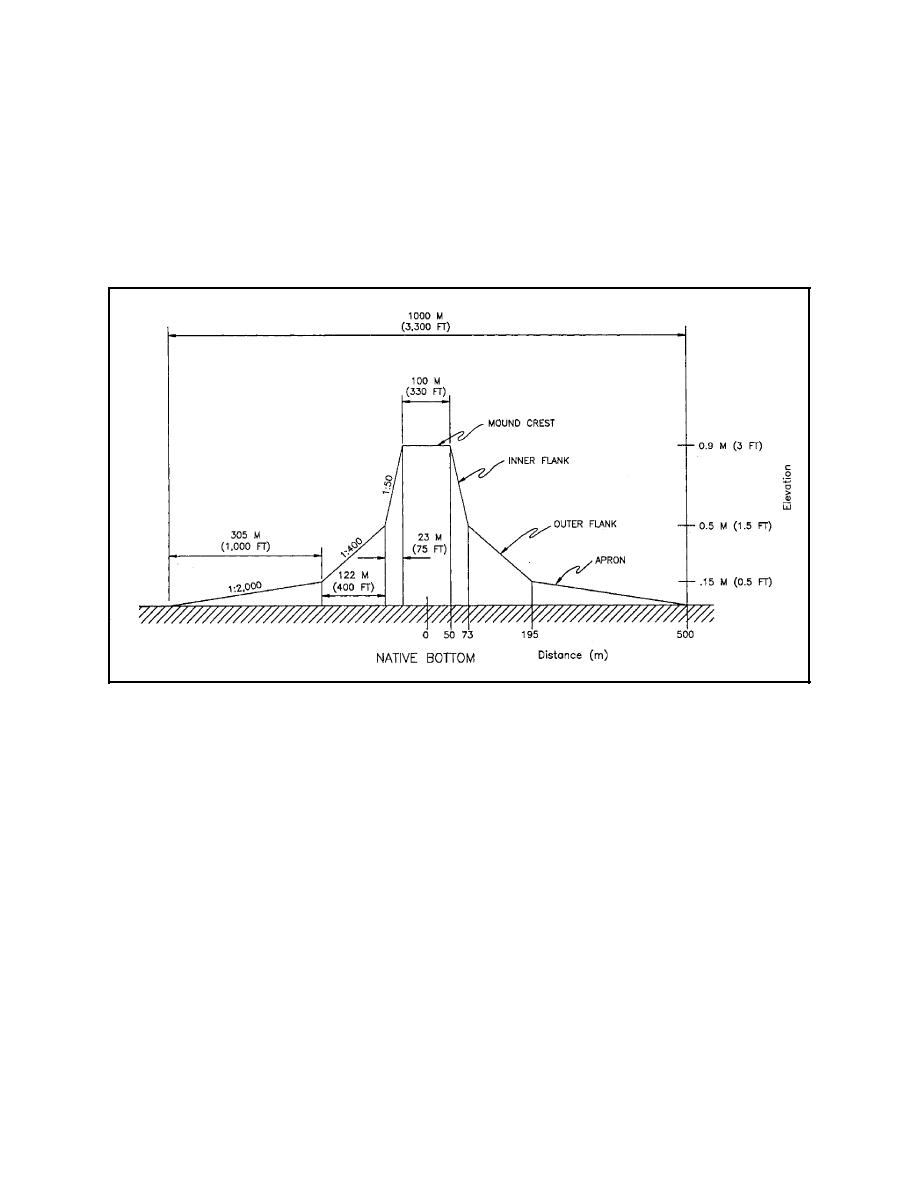 |
||
|
|
||
| |||||||||||||||
|
|
 mounds created have had reasonably consistent geometries. Most mounds
have been round or elliptical in shape, with a defined crest that is relatively
flat, a main mound side slope (also termed the inner flank), sometimes an
outer flank, and a thin outer apron. Figure 16 shows a generic contaminated
mound. The dimensions for the side slopes and apron widths are based on
those seen at the Port Newark/Elizabeth mound created in the Mud Dump
site in 1993. The following paragraphs describe each of the mound fea-
tures in more detail.
Figure 16.
Typical mound geometry
Mound crest
Most contaminated mounds to date have had main mound crest eleva-
tions of 1 to 2 m, though some contaminated mounds with elevations of
3+ m have been constructed. Higher mounds have been constructed from
noncontaminated material. For point-dumped projects in the New Eng-
land Division, mound crests have generally been circles or ellipses ap-
proximately 100 to 200 m in diameter, reflecting good control of the
disposal process around a taut-moored buoy (disposal within about 25 m
of the buoy), for moderate-sized projects, generally 20,000 to 100,000 yd3.
The 1993 Port Newark/Elizabeth project used disposal lanes, 150 m in
width and 300 to 420 m long, to create a triangular-shaped mound, ap-
proximately 630 by 645 m, with peak elevations of 1.5 to 2.4 m.
57
Chapter 6 Sediment Dispersion and Mound Development and Site Geometry During Placement
|
|
Privacy Statement - Press Release - Copyright Information. - Contact Us - Support Integrated Publishing |